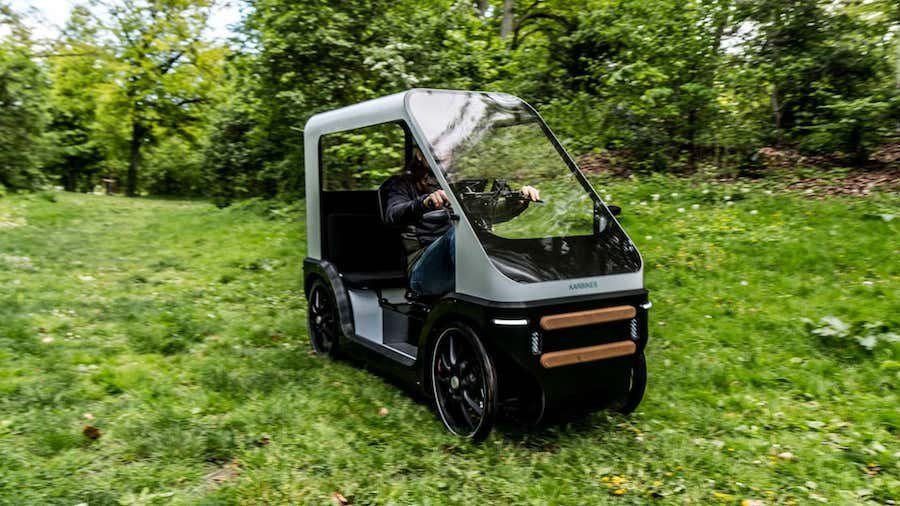This Strange Four-Wheel Vehicle Is an E-Bike, Its Makers Want It To Replace Your Car

We’ve seen all sorts of weird and wonderful creations in the mobility space, a lot of which are geared towards making urban mobility safer, more sustainable, and more enjoyable.
More specifically, electric cargo bikes are taking Europe by storm, and for good reason. These things have the cargo capacity of a small car, all while taking up a footprint that’s hardly bigger than a motorcycle.
Interestingly, a French startup by the name of Karbikes wants to take this a step further. In fact, it actually wants to be a car.
Well, not really.
You see, Karbikes’ eponymous creation is technically still an e-bike, but it shelters the rider in an enclosure that makes it look like a car. It has four wheels, a roof, and even rear seats for passengers and cargo. But the rider drives like they would a cargo bike—that’s to say, with pedals and a handlebar. And so Karbikes says that the Karbike is a cross between a bicycle and a car.
Just like the regulated electric bicycles in Europe, the Karbike gets a pedal-activated electric motor. It’s built around a sturdy frame, complete with lockable doors, and an anti-theft alarm system. The Karbike’s doors can also be removed a la Jeep Wrangler, for an open-air experience—just don’t take it down some rugged off-road terrain.
Beneath the surface, the Karbike really is an e-bike. It even conforms to the 250-watt power limit of pedal-assist e-bikes in Europe. It does, however, get a sizable battery with 750-watt-hours of juice providing up to 75 kilometers (47 miles) of range on a single charge. Heck, it even gets solar panels on the roof for some added range on sunny days.
The Karbike is just one of many new electric cargo bike concepts that have recently made their way into various European cities. These things just make a lot of sense in the urban setting, where establishments and homes are close together, and there aren’t many wide open roads with cars and trucks zipping past at high speed.
They’re definitely more cost-effective and space-efficient than driving a car around the neighborhood, and more often than not, they’re way more affordable than even the cheapest cars on the market.
But here’s the kicker. With so many new e-bikes, e-trikes, e-scooters, and e-whatevers hitting the market, how can we be so sure that these things don’t end up as garbage in landfills in a decade or so—or as is the case in France, relics submerged beneath the River Seine?
Are we better off just making our cars, motorcycles, and even bicycles last longer by actually taking care of them?
Related News


